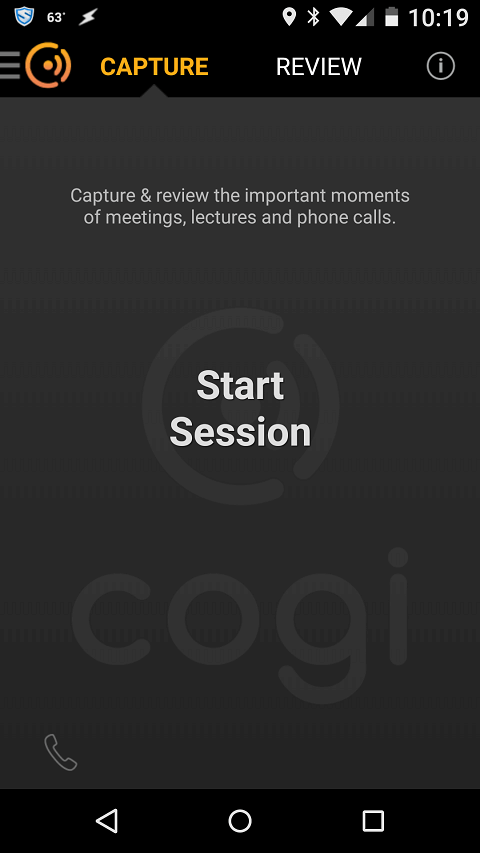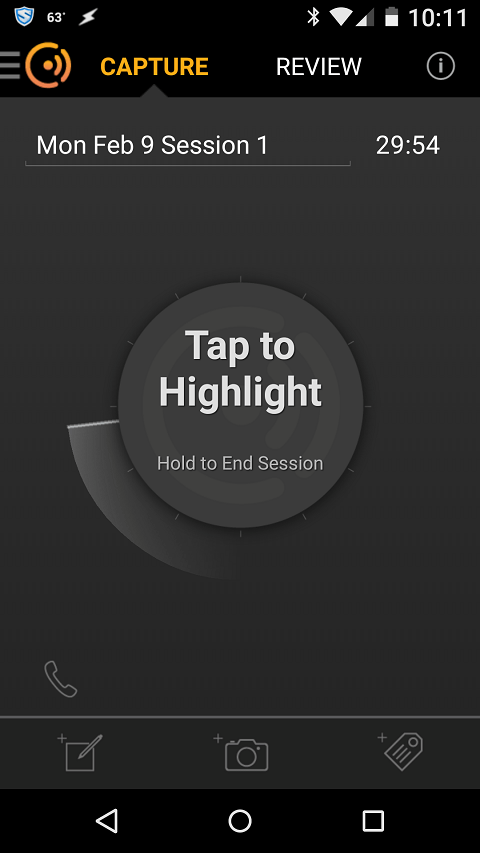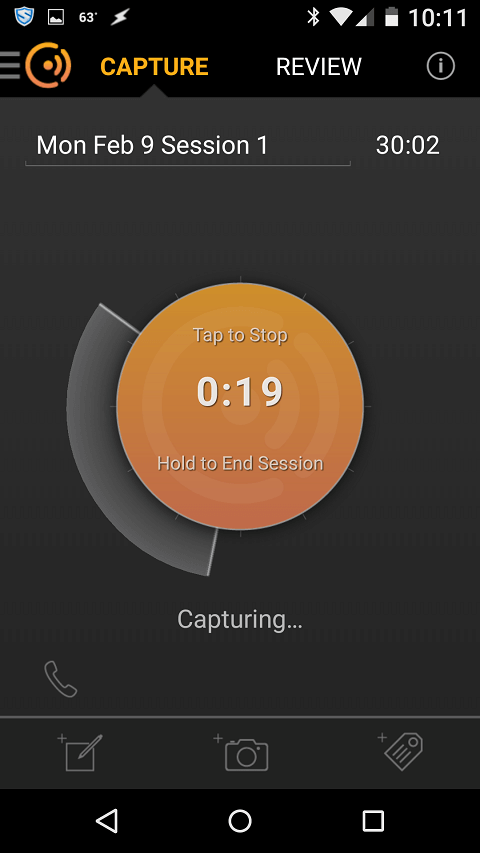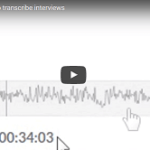When we watched the State of the Union address with our kids a few weeks ago, 3-year-old Sophie Sue was amazed at how members of Congress were sitting still and listening. They weren’t fidgeting, looking around or running off to play with Legos.
“Wow, they’re doing a good job, right?” said the little Tedesco munchkin.
It was one of those cute family moments when I wished I could go back in time and hit the record button.
So I did.
I tapped the screen of my smartphone and the Cogi Android app captured the last 15 seconds of our conversation. Cogi kept on recording until I tapped the screen again. And I repeated the process through the whole speech, capturing only the highlights of what our kids said.
This is the genius behind Cogi — you only record what you want. And Cogi lets you jump back in time to capture that fleeting moment. Because by the time you realize you want to record something, it’s usually too late.
“I don’t want to record everything,” said Mark Cromack, president and chief technology officer of Santa Barbara-based Cogi Inc. “But by the time I realize I do want to record something, I do need to back up a bit. That’s the cool part.”
The app’s name is about capturing the “cogent idea” and it’s like a DVR for your life. Cogi could help anyone who attends long meetings, school lectures or court hearings. You can also get creative with it. I’ve started to use Cogi during car rides with the kids when they’re being funny. Cromack said bird watchers use it to record bird calls. Lifehacker called it one of the best recording apps for Android.

“Imagine a world where you got, let’s say, a lapel pin,” Cromack said. “You could just tap it that moment when something interesting happens. Or better yet, it just magically knew that something was cogent to you.
“Well, that’s an interesting dream. Roll that back to some degree of reality. What could we achieve nowadays?”
Then smartphones became a thing. Today, the Cogi app is available on iTunes and Google Play. Here’s how the app works:
You open Cogi and a button on the screen says “start session.”

Tap on that and start a new session. A session is when Cogi is listening but not actively recording. The button now says “tap to highlight.”

When you hear something you want to keep, tap the highlight button. Cogi then starts to actively record, and it goes back in time to record the previous audio it was listening to before you hit the button. You have the option to go back five, 15, 30 or 45 seconds in time.

You can repeat this process as often as you like. When you’re done with the session, hold down the button. Cogi lets you add notes, tags and photos to each session. You can upload sessions or audio clips to services such as Evernote.
That’s all free. Cogi makes money by offering a monthly membership service that allows you to record phone calls and receive transcripts of recordings for a fee.
While you could use it to record an entire interview and soak up every word, Cogi really shines when you only want to capture the highlights of long conversations or events.
One problem with Cogi is that it only records in Windows .wav files. The quality is great but the large files hog memory. Cromack said Cogi will soon add options to record in other formats.
“That’s coming out within probably the next public release,” he said. “It has to.” Cromack said the company knows users want that option but it’s one item on a long list of improvements the company is working on.
“We’ve known about it,” he said. “The issue was just one of, ‘Let’s get something out there that works and it’s solid and has that cool experience.’”
Related: A running list of must-have Android apps for journalists in 2017
Another quibble: When the screen is off or when you’re using other apps, Cogi no longer passively listens during a session. (If you’re actively recording, Cogi will still capture audio.) The screen dims after awhile to save battery life. But if I’m taking notes or something I don’t want to accidentally brush the screen and screw something up. Or maybe I’ll need to use another app during a session.
By the time I realize I do want to record something, I do need to back up a bit. That’s the cool part.”
By the time I realize I do want to record something, I do need to back up a bit. That’s the cool part.”
Cromack sounded receptive to that critique but declined to discuss details about whether it will be addressed in upcoming updates, or whether Cogi will branch out beyond audio into the world of video. He later sent me an email saying the company is developing a version of the app that lets users record sessions even when the screen is off.
“Based on your input and questions, we already have implemented a private version of the app that continues to record/monitor when the screen is off,” he wrote. “Control is passed to the volume keys and feedback to the LEDs (on Android). This not only provides a more subtle way of triggering Cogi, but it dramatically improves power savings achieved as compared to the current dim screen feature. As such, we’ll be delivering this ‘power user feature,’ no pun intended, in a future release (soon). We still have some things to work out with this feature, as this proof of concept version was to just see how it *might* work.”
Cromack said that later this year Cogi will offer cloud services to members. This would enable users to share highlights, notes and photos with others who could view that material in a web browser.
“All of that is part of Cogi cloud services,” Cromack said. “It’s not available today but it’s going to be out.”
If demand increases for Cogi’s transcription services for members, Cromack said the company plans to include other languages and translation services. Cogi is also going to be updated to support enhancements for larger devices, such as tablets and iPads. “There’s a long laundry list of really exciting capabilities,” he said.
For me, Cogi offers a way to capture fleeting moments not only for news stories, but for the times with my kids when they say something funny or insightful. Parents think they’ll remember every moment of their children growing up. Cogi can help make that happen — even for the moments we miss. Just hit that highlight button, upload your session, and make a family journal.
Now you’ll never forget that time your daughter watched the State of the Union address.




Cogi captures your important moments, whether it’s a speech by the President or your kid’s cute commentary. http://t.co/B0ITqsq2M4 #recorder
RT @CogiNotes: Cogi captures your important moments, whether it’s a speech by the President or your kid’s cute commentary. http://t.co/B0IT…